Intro
Discover key Clonidine facts, including its uses, side effects, and interactions, to understand this medications role in treating ADHD, hypertension, and anxiety disorders, with insights into its mechanisms, benefits, and risks.
Clonidine is a medication that has been widely used for several decades to treat various health conditions. Its effectiveness and relatively low risk of side effects have made it a popular choice among healthcare professionals. However, despite its widespread use, there are many aspects of clonidine that remain unknown to the general public. In this article, we will delve into the world of clonidine and explore its uses, benefits, and potential risks.
Clonidine is primarily used to treat high blood pressure, also known as hypertension. It works by stimulating certain receptors in the brain, which in turn reduces the heart rate and blood pressure. This makes it an effective medication for people who suffer from hypertension and are at risk of developing cardiovascular disease. Additionally, clonidine has been used to treat other conditions such as attention deficit hyperactivity disorder (ADHD), anxiety disorders, and certain types of pain.
The use of clonidine has been extensively studied, and its benefits have been well-documented. For example, studies have shown that clonidine can help reduce blood pressure in people with hypertension, which can reduce the risk of heart attack, stroke, and kidney disease. Furthermore, clonidine has been shown to be effective in reducing symptoms of ADHD, such as impulsivity and hyperactivity, in children and adults. However, like all medications, clonidine can have potential side effects, and its use should be carefully monitored by a healthcare professional.
What is Clonidine?
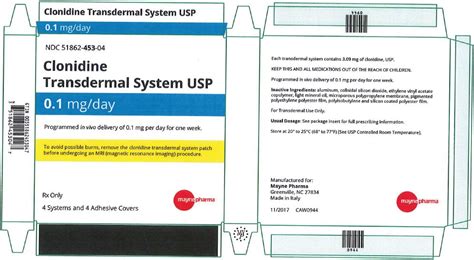
How Does Clonidine Work?
Clonidine works by stimulating certain receptors in the brain, which in turn reduces the heart rate and blood pressure. This is achieved through a complex process that involves the activation of certain neurotransmitters, such as norepinephrine and acetylcholine. When clonidine binds to these receptors, it reduces the release of norepinephrine, which is a neurotransmitter that increases heart rate and blood pressure. As a result, the heart rate and blood pressure decrease, which can help reduce the risk of cardiovascular disease.Benefits of Clonidine

Potential Side Effects of Clonidine
Like all medications, clonidine can have potential side effects. Some of the most common side effects include: * Drowsiness: Clonidine can cause drowsiness, which can be a problem for people who need to be alert and focused. * Dry mouth: Clonidine can cause dry mouth, which can increase the risk of tooth decay and other oral health problems. * Constipation: Clonidine can cause constipation, which can be uncomfortable and painful. * Dizziness: Clonidine can cause dizziness, which can increase the risk of falls and other accidents.Clonidine for ADHD
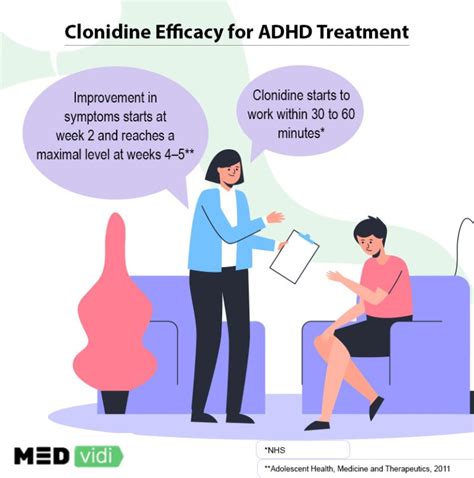
Clonidine for Anxiety
Clonidine has been used to treat anxiety disorders, such as generalized anxiety disorder and social anxiety disorder. It works by reducing the activity of certain neurotransmitters, such as norepinephrine, which can contribute to anxiety. Clonidine has been shown to be effective in reducing symptoms of anxiety, such as worry and fear. However, its use should be carefully monitored by a healthcare professional, as it can have potential side effects.Clonidine for Pain Relief
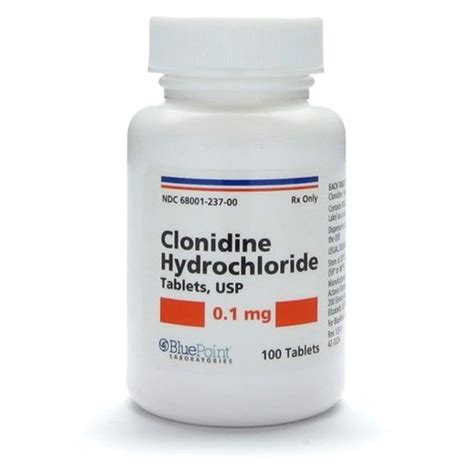
Clonidine Interactions
Clonidine can interact with other medications, such as: * Beta blockers: Clonidine can increase the effects of beta blockers, which can lead to a significant decrease in blood pressure. * Calcium channel blockers: Clonidine can increase the effects of calcium channel blockers, which can lead to a significant decrease in blood pressure. * Opioids: Clonidine can increase the effects of opioids, which can lead to a significant increase in sedation and respiratory depression.Clonidine Dosage

Clonidine Overdose
Clonidine overdose can occur if too much of the medication is taken. Symptoms of overdose include: * Drowsiness * Confusion * Slow heart rate * Low blood pressure * Respiratory depressionIf you suspect an overdose, seek medical attention immediately.
Clonidine Withdrawal
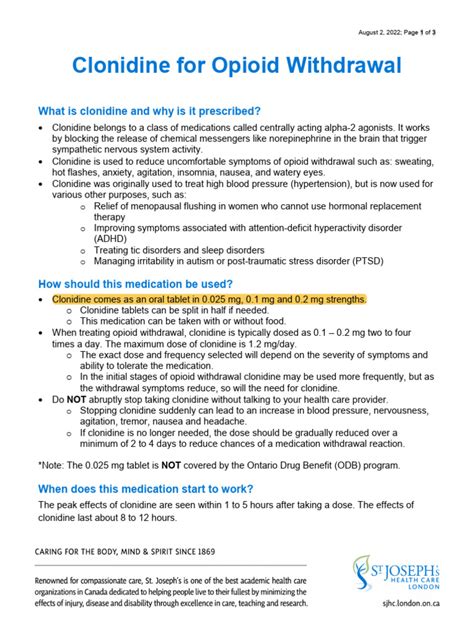
To avoid withdrawal, it is recommended to taper off the medication gradually under the supervision of a healthcare professional.
Clonidine and Pregnancy
Clonidine is generally considered safe to use during pregnancy. However, its use should be carefully monitored by a healthcare professional, as it can have potential side effects on the fetus.Clonidine and Breastfeeding

Clonidine and Children
Clonidine is generally considered safe to use in children. However, its use should be carefully monitored by a healthcare professional, as it can have potential side effects.Clonidine and Elderly
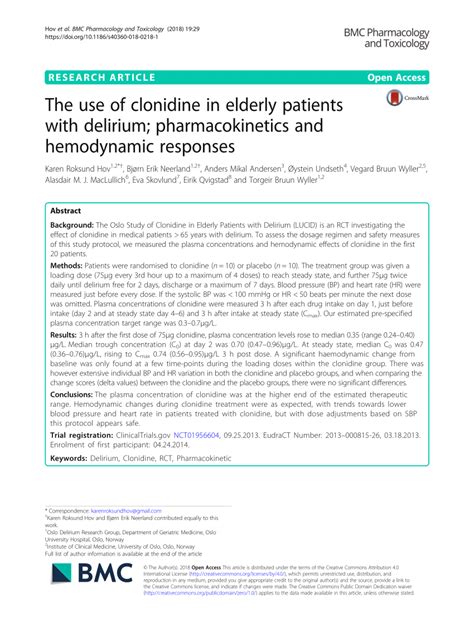
Clonidine and Other Medications
Clonidine can interact with other medications, such as: * Antidepressants * Antipsychotics * Anti-anxiety medications * Pain medicationsIt is essential to inform your healthcare professional about all the medications you are taking before starting clonidine.
What is clonidine used for?
+Clonidine is used to treat various health conditions, including hypertension, ADHD, anxiety disorders, and certain types of pain.
How does clonidine work?
+Clonidine works by stimulating certain receptors in the brain, which in turn reduces the heart rate and blood pressure.
What are the potential side effects of clonidine?
+The potential side effects of clonidine include drowsiness, dry mouth, constipation, and dizziness.
Can clonidine be used in children?
+Yes, clonidine can be used in children, but its use should be carefully monitored by a healthcare professional.
Can clonidine be used during pregnancy and breastfeeding?
+Yes, clonidine can be used during pregnancy and breastfeeding, but its use should be carefully monitored by a healthcare professional.
In conclusion, clonidine is a versatile medication that has been widely used to treat various health conditions. Its benefits and potential side effects should be carefully considered before starting treatment. If you have any questions or concerns about clonidine, it is essential to consult with a healthcare professional. We hope this article has provided you with a comprehensive understanding of clonidine and its uses. If you have any further questions or would like to share your experiences with clonidine, please feel free to comment below. Additionally, if you found this article informative, please share it with others who may benefit from this information.
